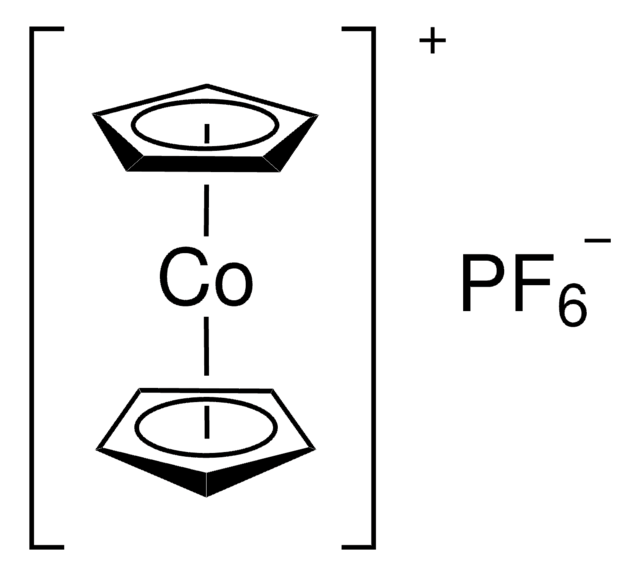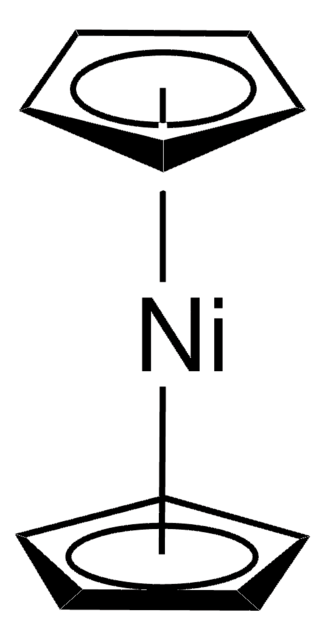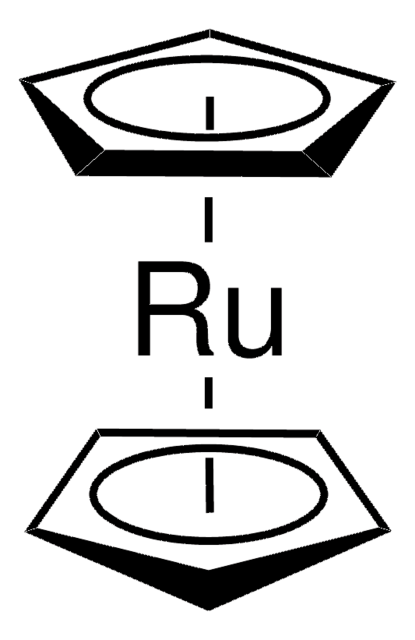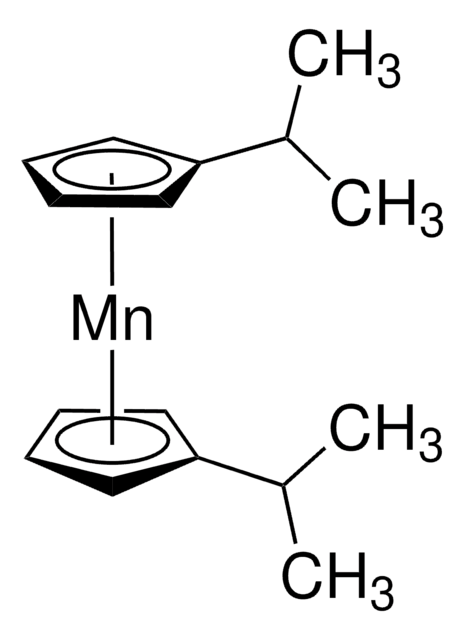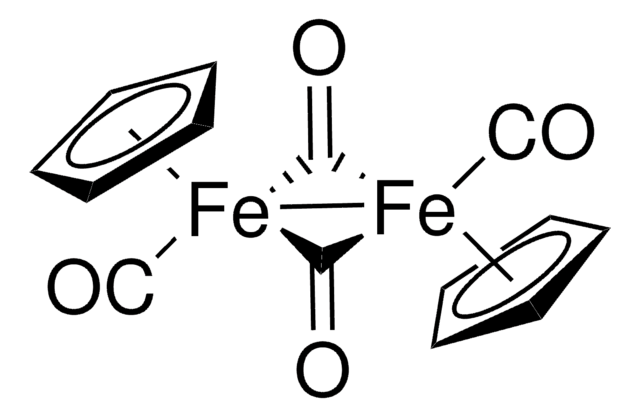339164
Bis(cyclopentadienyl)cobalt(II)
Synonym(s):
Cobaltocene
About This Item
Recommended Products
form
powder or crystals
solid
Quality Level
reaction suitability
core: cobalt
mp
176-180 °C (dec.) (lit.)
storage temp.
2-8°C
SMILES string
[Co].[CH]1[CH][CH][CH][CH]1.[CH]2[CH][CH][CH][CH]2
InChI
1S/2C5H5.Co/c2*1-2-4-5-3-1;/h2*1-5H;
InChI key
PXFGMRZPRDJDEK-UHFFFAOYSA-N
General description
Application
- As a dopant to prepare encapsulated carbon nanotubes with high thermoelectric conversion efficiency.
- As a CVD precursor to fabricate cobalt oxide thin films for various applications.
- As a redox-active anode species in Li-based redox flow batteries to achieve higher energy densities and energy efficiencies.
- As a catalyst for controlled/“living” radical polymerization of methylmethacrylate.
Signal Word
Danger
Hazard Statements
Precautionary Statements
Hazard Classifications
Carc. 2 - Flam. Sol. 2 - Muta. 2 - Resp. Sens. 1 - Skin Sens. 1
Storage Class Code
4.1B - Flammable solid hazardous materials
WGK
WGK 3
Personal Protective Equipment
Choose from one of the most recent versions:
Already Own This Product?
Find documentation for the products that you have recently purchased in the Document Library.
Customers Also Viewed
Articles
A hard disk drive (HDD) is a data storage device that stores digital information by magnetizing nanosized magnets on flat disks and retrieves data by sensing the resulting magnetic field.
Atomic layer deposition (ALD) techniques have emerged in the last ten years to meet various needs including semiconductor device miniaturization, conformal deposition on porous structures and coating of nanoparticles. ALD is based on two sequential self-limiting surface reactions.
A hard disk drive (HDD) is a data storage device that stores digital information by magnetizing nanosized magnets on flat disks and retrieves data by sensing the resulting magnetic field.
Advances in materials have often been led by the development of new synthetic methods that provide control over size, morphology and structure.
Our team of scientists has experience in all areas of research including Life Science, Material Science, Chemical Synthesis, Chromatography, Analytical and many others.
Contact Technical Service
